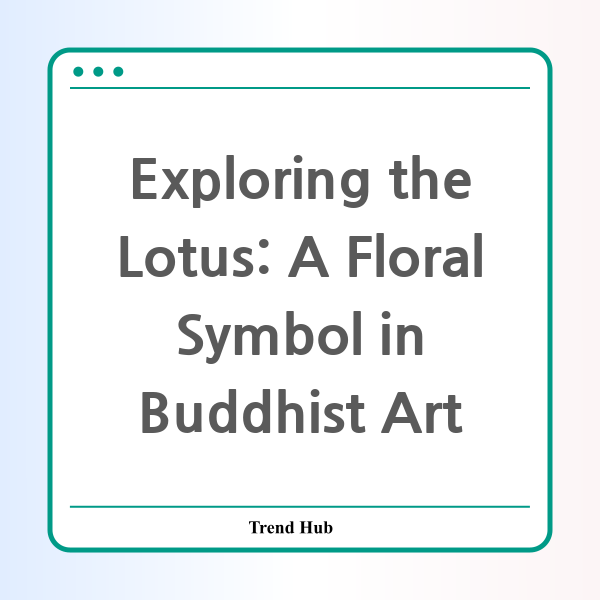* This website participates in the Amazon Affiliate Program and earns from qualifying purchases.

Have you ever pondered the deeper meanings behind flowers in art? The lotus flower, a significant symbol in Buddhist art, is a prime example of how nature influences spirituality and culture. It embodies purity, enlightenment, and rebirth, making it a profound representation of Buddhist teachings.
The lotus flower rises from murky waters, blooming beautifully above the surface. This imagery resonates deeply with the journey of life in Buddhism, wherein individuals strive for enlightenment amid life’s challenges and impurities. The more we understand the lotus, the more we can appreciate its rich symbolism and its role in Buddhist art.
In various Buddhist traditions, the lotus is depicted in many forms, each lending itself to a multitude of meanings. For instance, the different colors of the lotus represent various stages of enlightenment and qualities of the mind. White lotuses symbolize purity and spiritual perfection, while pink lotuses represent the historical Buddha himself.
Artists around the world have used the lotus to convey complex ideas succinctly. When seen in sculptures, paintings, or temple architecture, the lotus not only beautifies but also instructs and inspires. Each depiction can inspire meditation and reflection, allowing the viewer to connect with the deeper philosophical concepts inherent in Buddhism.
To illustrate the significance of the lotus further, let’s consider some renowned examples of its representation in Buddhist art:
- Lotus Position (Padmasana): Many meditative postures, especially those of the Buddha, are depicted in a lotus position that signifies spiritual awakening.
- Statues and Murals: In temples, you’ll often find statues of the Buddha seated on or holding a lotus, signifying his transcendence above worldly attachments.
- Thangka Paintings: These traditional Tibetan paintings regularly feature lotuses as background motifs, representing purity and the path to enlightenment.
The significance of the lotus transcends mere aesthetics. It serves as a reminder of the potential for all beings to attain enlightenment. Just as the lotus can emerge from muddy waters, individuals too can rise above suffering and ignorance to achieve higher states of consciousness.
Moreover, the lotus is not only symbolic in religious contexts; it has made its way into everyday life and culture. Many Buddhists keep images of the lotus at home, and it is commonly used in meditation practices to facilitate focus and mindfulness. The act of meditating on the lotus can help individuals fortify their connection to the earth while simultaneously aspiring towards higher ideals.
In modern art and design, the lotus continues to inspire various forms of expression. Fashion, accessories, and tattoos often incorporate the lotus motif, demonstrating its universal appeal and the desire for individuals to connect with its spiritual significance.
In conclusion, the lotus flower is much more than just a beautiful plant; it serves as a powerful symbol within Buddhist art and philosophy. Its journey from murky depths to radiant bloom mirrors our own potential for spiritual growth. Whether you are a lifelong practitioner or simply curious about the teachings of Buddhism, the lotus invites us to reflect on our own paths towards enlightenment.
So next time you encounter the lotus in art, take a moment to appreciate its profound symbolism—it’s a gentle nudge towards a deeper understanding of life and a reminder of the beauty of transformation.
* This website participates in the Amazon Affiliate Program and earns from qualifying purchases.